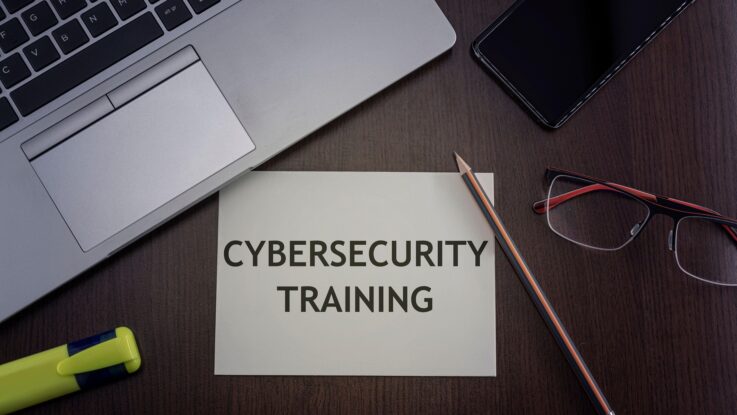
Cybersecurity jobs continue to be the most in demand, as the industry cannot keep up with the number of openings, which currently sit at more than 700,000. Meanwhile, 66% of professionals in cybersecurity roles report feeling significantly stressed at work, due to their growing workload level. As soon as one security problem is mitigated, two even more complex problems require solving. Combine this volatile threat landscape with under-resourced SecOps teams left in the crosshairs to manage more sensitive data moving across networks and clouds, and something is going to give. With data breaches costing companies, on average, $3 million to $5 million per event, businesses cannot afford to leave their security teams behind.
The good news is there are ways businesses can start to shrink the cybersecurity skills gap now. Here are a few.
Invest in Your Existing Workforce With Skills-Now Training
In a highly competitive and volatile job market, you want to give your workforce a reason to stay. Focusing on investing in your workforce is equally as important as focusing on the bottom line, and the on-the-job opportunities for your workforce should reflect this. Further, Gartner predicts that one-quarter of cybersecurity professionals will leave the field altogether by 2025, due to work-related burnout.
A way to resolve this problem is by providing your workforce with new training opportunities that better their ability to keep up with their workloads. With 50% of employees wanting to learn and earn more at work than they currently are, providing new skills training opportunities is a way to prove to professionals that your organization is worth working for. Opportunities for training that result in skills-based certificates can result in higher pay for the employee and a higher return on investment for the employer — which is critical for organizations dealing with shrinking cybersecurity budgets.
Embrace New Technologies in Your Cybersecurity Strategies
Digital transformation can be a double-edge sword. It makes businesses more agile and productive. It also creates new types of job opportunities and is the biggest driver of economic change. But, adopting new technologies also gives bad actors new attack vectors to realize their nefarious campaigns.
New technology requires talent to drive this future — a challenge that is only increasing with the speed and scale of change. Generative AI, for example, is on track to become a $1 trillion market, according to Bloomberg Intelligence. As investments in AI continue to increase, the skills of the workforce must keep up if organizations want to maintain their competitive edge. This is especially the case for organizations that are heavily investing in emerging technologies where skills needed for new jobs are not yet widely available. With AI set to create entirely new attack surfaces, breaches, and other entry points for bad actors, having the skills needed to understand the technology is also key to mitigating the risks of attacks.
According to Salesforce, only 1 in 10 workers report having AI skills in the workplace. Rather than trying or waiting to fill the open positions in your cybersecurity teams with new talent that is hard to come by, train your existing workforce with the skills needed to manage these new technologies as you invest in them. This means that you should upskill your employees at the same time as investments are made in these new technologies, not after. Certificate-based skills-training programs, like Cisco U., are utilizing AI-based learning programs to accelerate and personalize the learning experience for individuals so they are constantly learning, adapting and growing.
Look Beyond the SOC for Organizationwide Support
Cybersecurity is not just a security operations center (SOC) imperative. The proliferation of cyber threats and costs of data breaches has made it a priority across the entire business. Nurturing a cybersecurity-first organization requires the proper infrastructure, personnel, and skills training. This is not about getting approval from the CEO or chief technology officer, but rather demonstrating the value and benefits of cybersecurity skills-now training across the business. Having organization-wide support is the first step toward creating a workplace culture that recognizes the value and potential of your existing workforce to support your cybersecurity strategies.
It’s the job of the chief information security officer (CISO) to protect an organization’s critical data by protecting the organization’s assets, applications, systems, and technology, while advancing business outcomes. That includes knowing where their current skills are across the entire organization and continually looking for ways to upskill your talent pool to keep up with the security landscape.
Conclusion
As the cybersecurity landscape continues to evolve, so will the skills required to get the job done. This is a consistent reality in the tech and cybersecurity sectors, where priorities can change at a moment’s notice. Keeping in mind that the cybersecurity skills gap will not close overnight, CISOs must remember that taking a skills-now approach is the fastest way to align your workforce with your organization’s goals. Training can take place each time the organization makes a priority shift — whether it’s from blockchain to AI, or from AI to the next big thing.
By providing your current workforce with upskilling and education opportunities, you’re able to create a more agile workforce and provide employees with new skill sets on the job. Focusing on the bigger picture of creating a more agile workforce will best prepare CISOs for the challenges ahead. Now, more than ever before, organizations are leveraging technology to drive better business outcomes — it is essential organizations bring their employees’ skill sets with them on the path to innovation.
The future of the cybersecurity workforce will rely less on long-led legacy education models that struggle to keep up with the pace of innovation and emerging technologies. Organizations today need to focus on a more modern, cost-effective approach that focuses on certification-driven, skills-now training for their workforce that enables them to train their existing talent as investments grow.